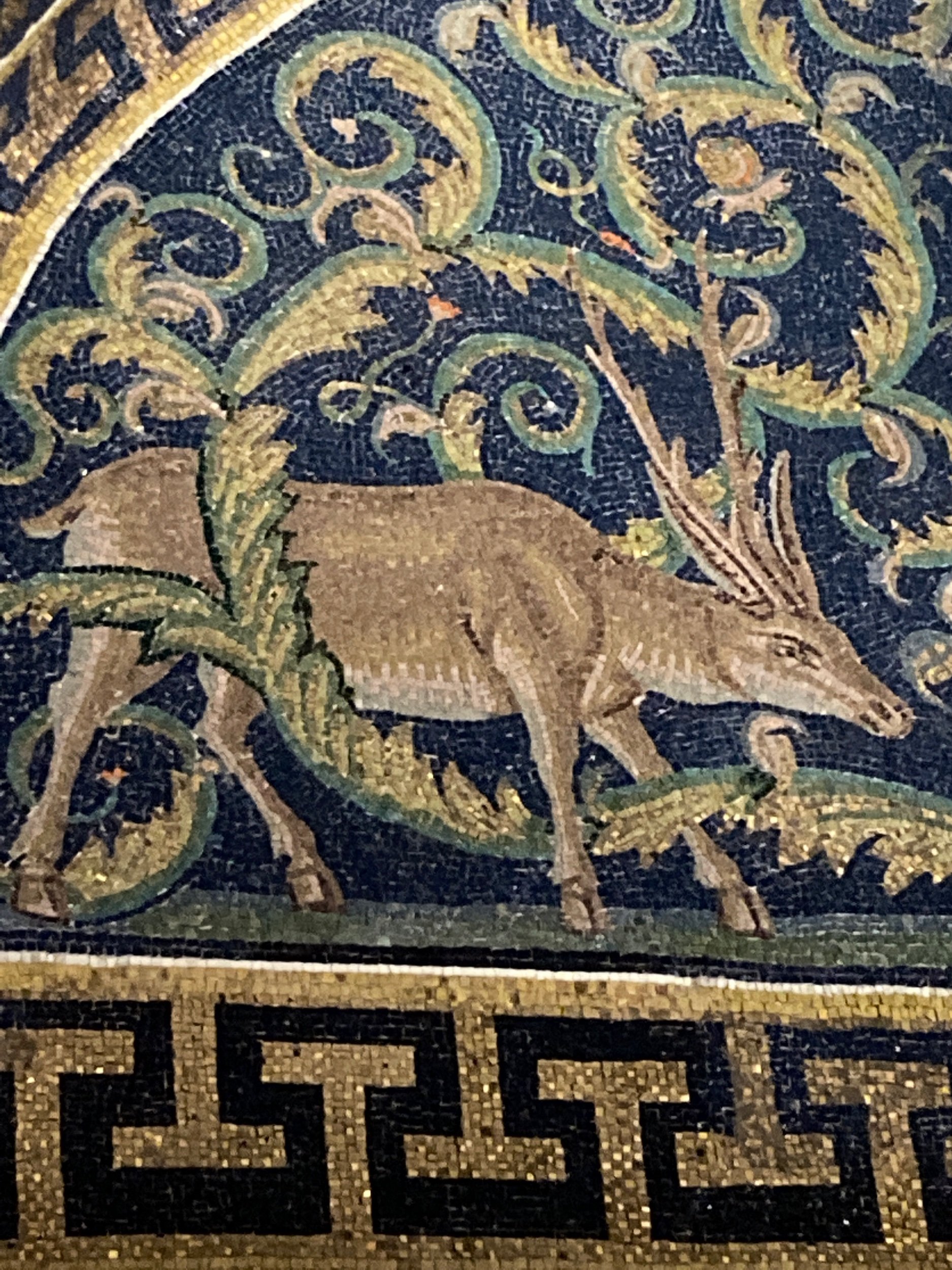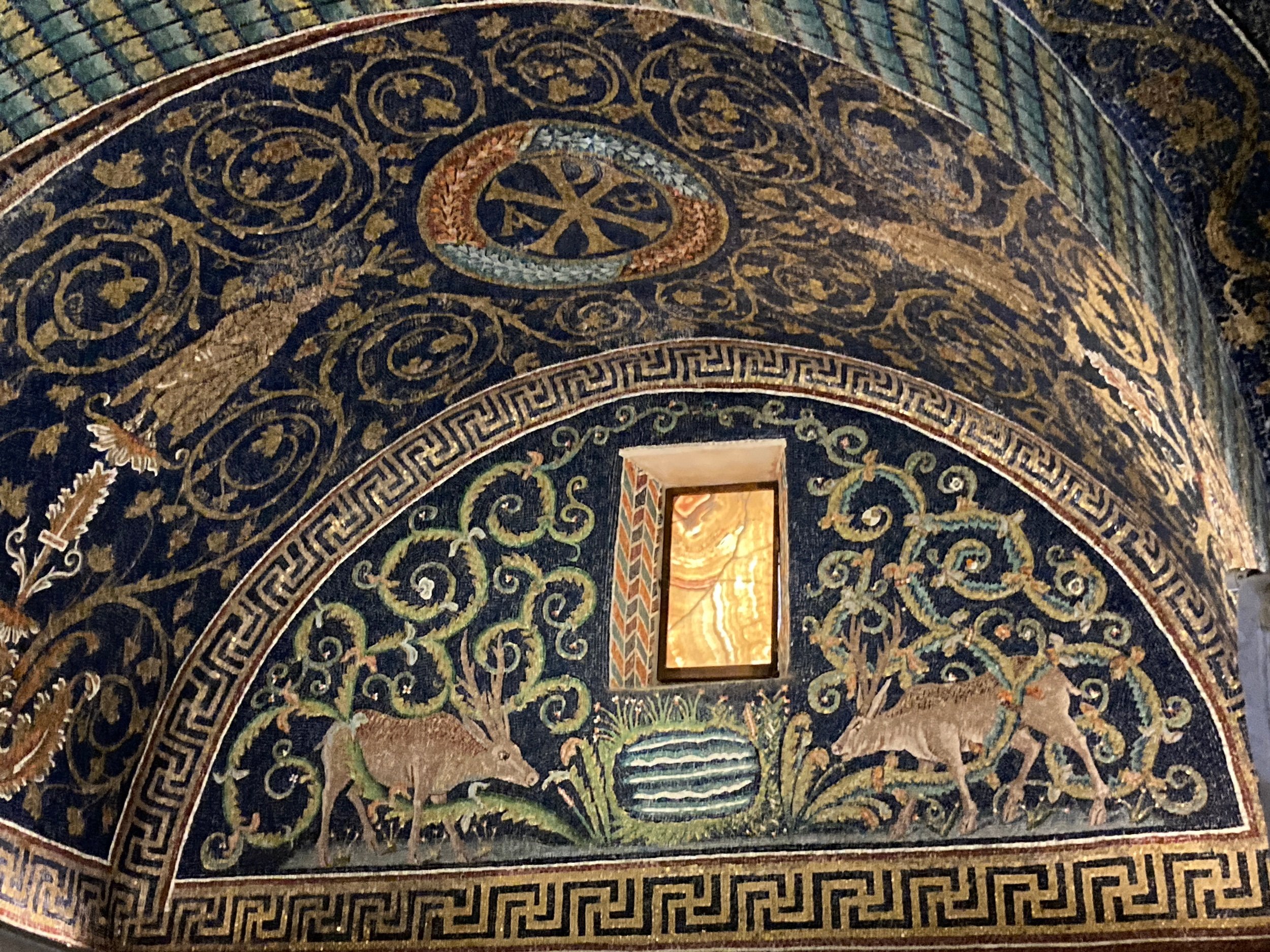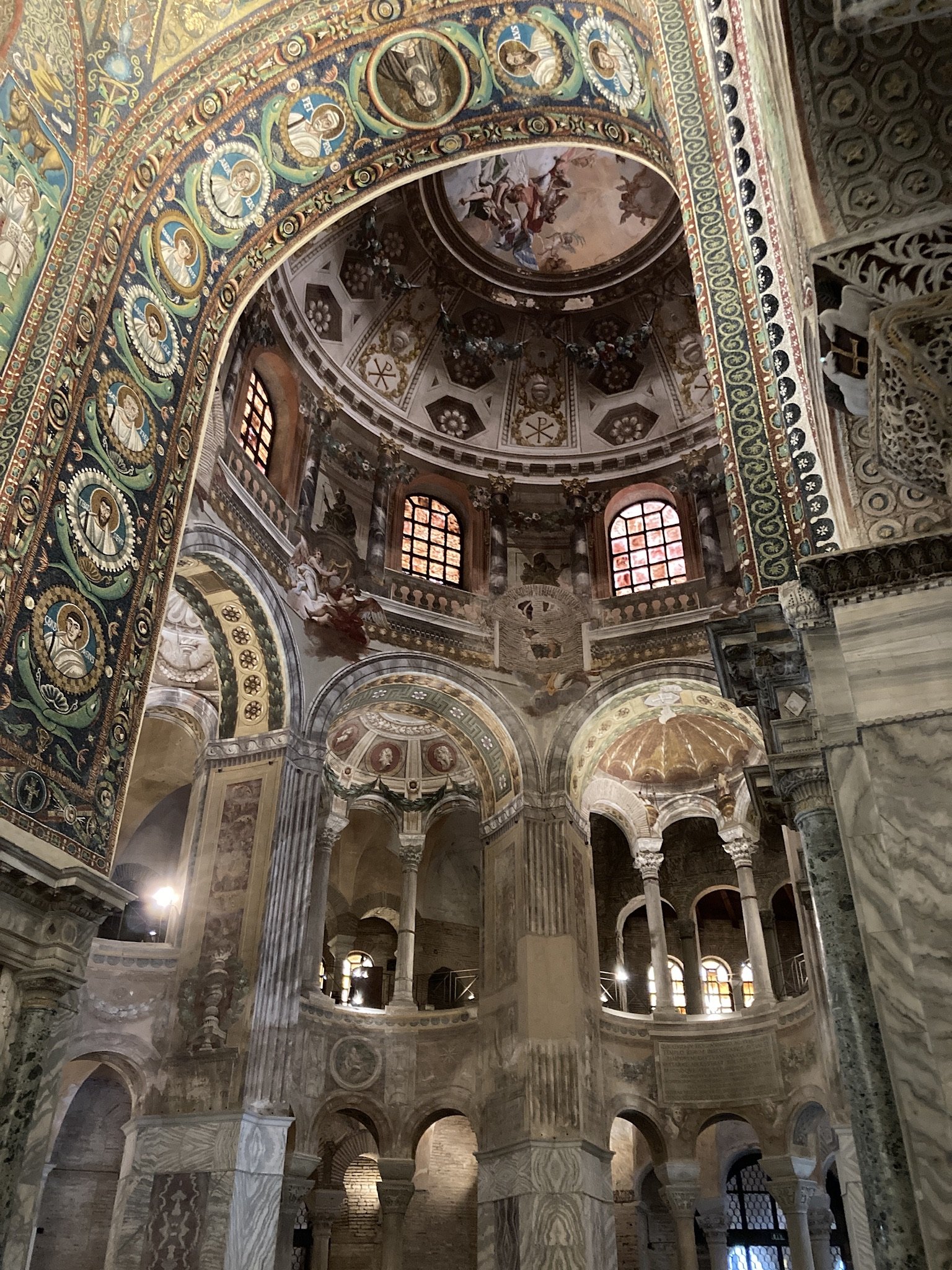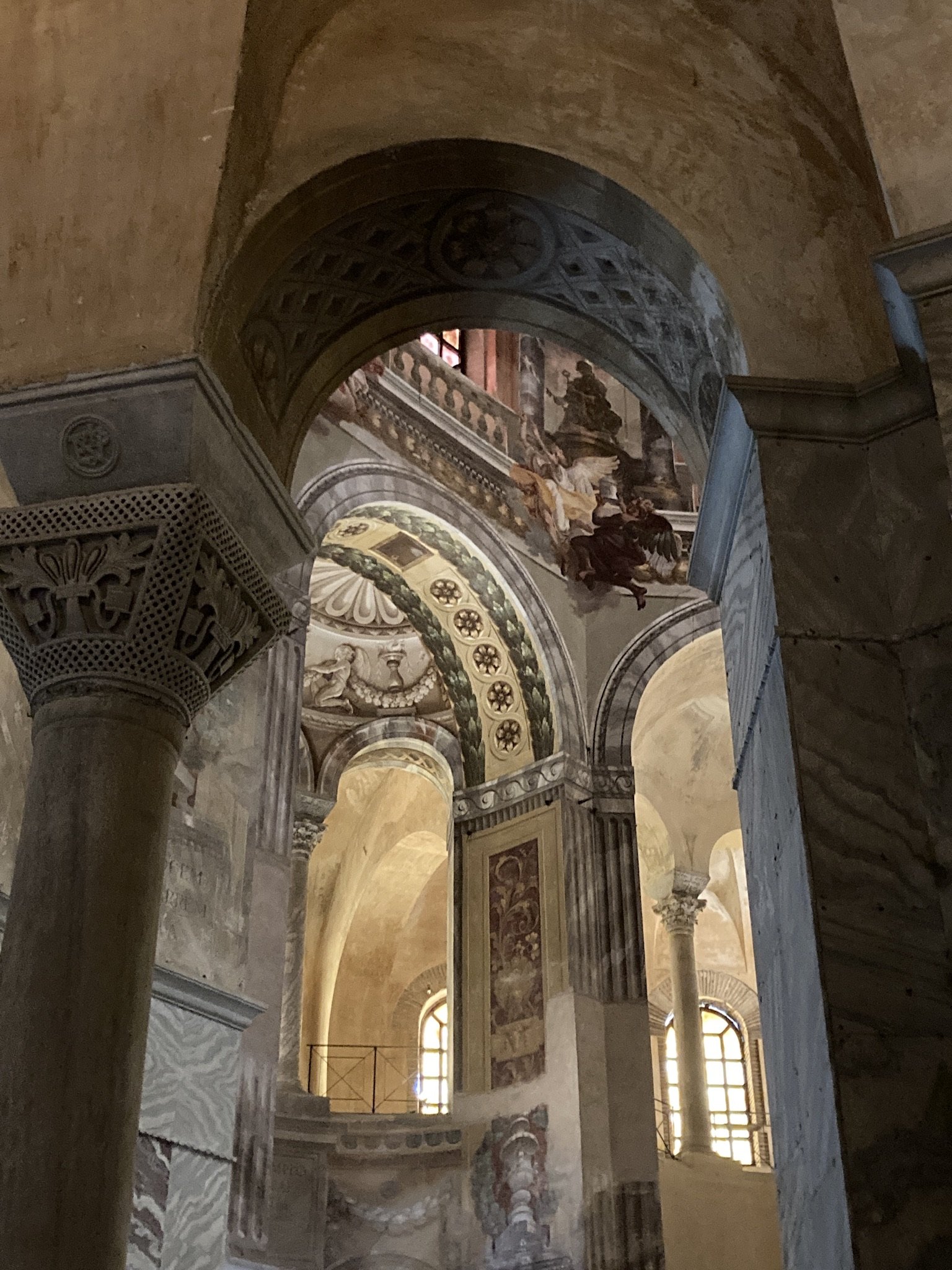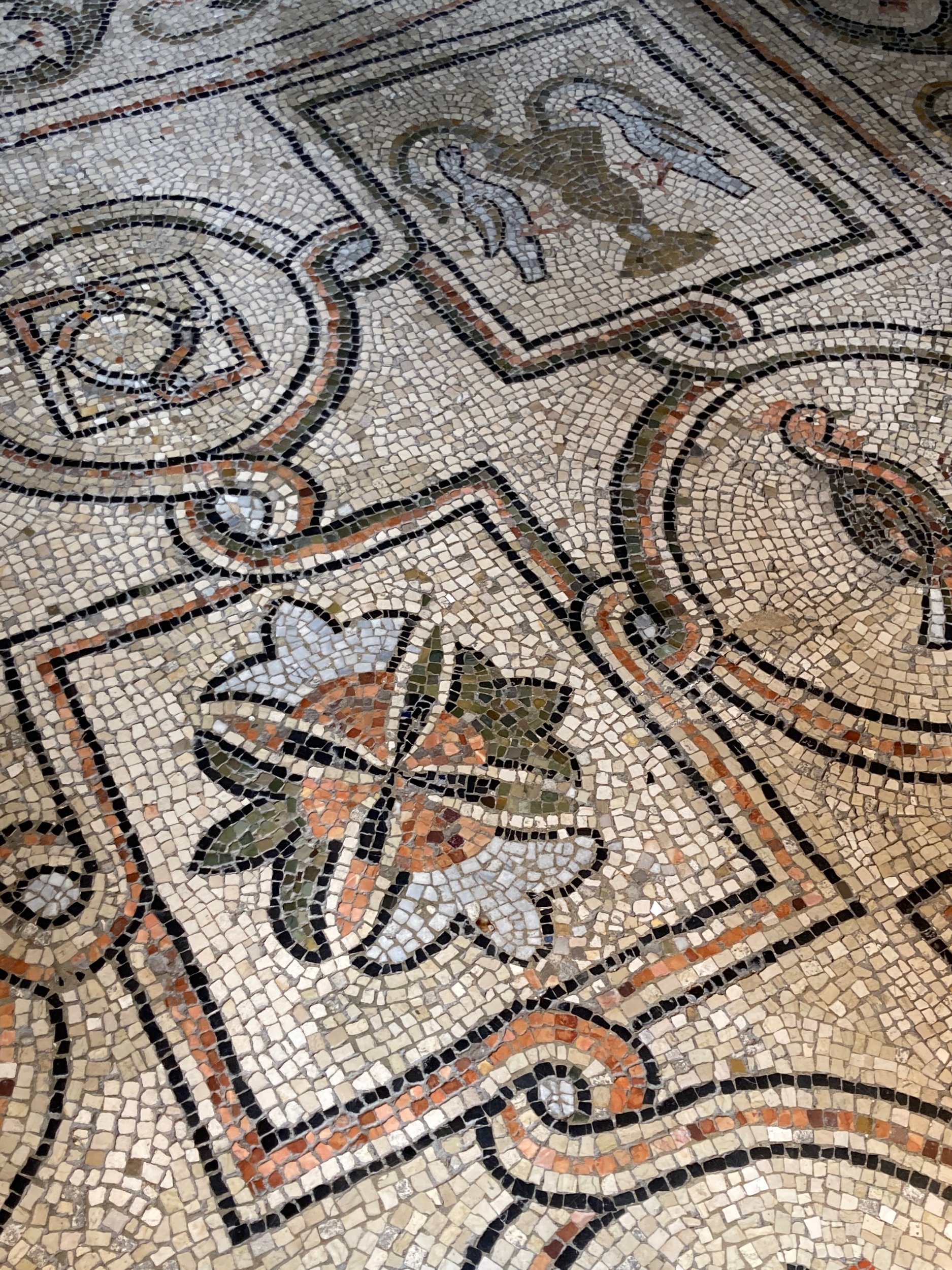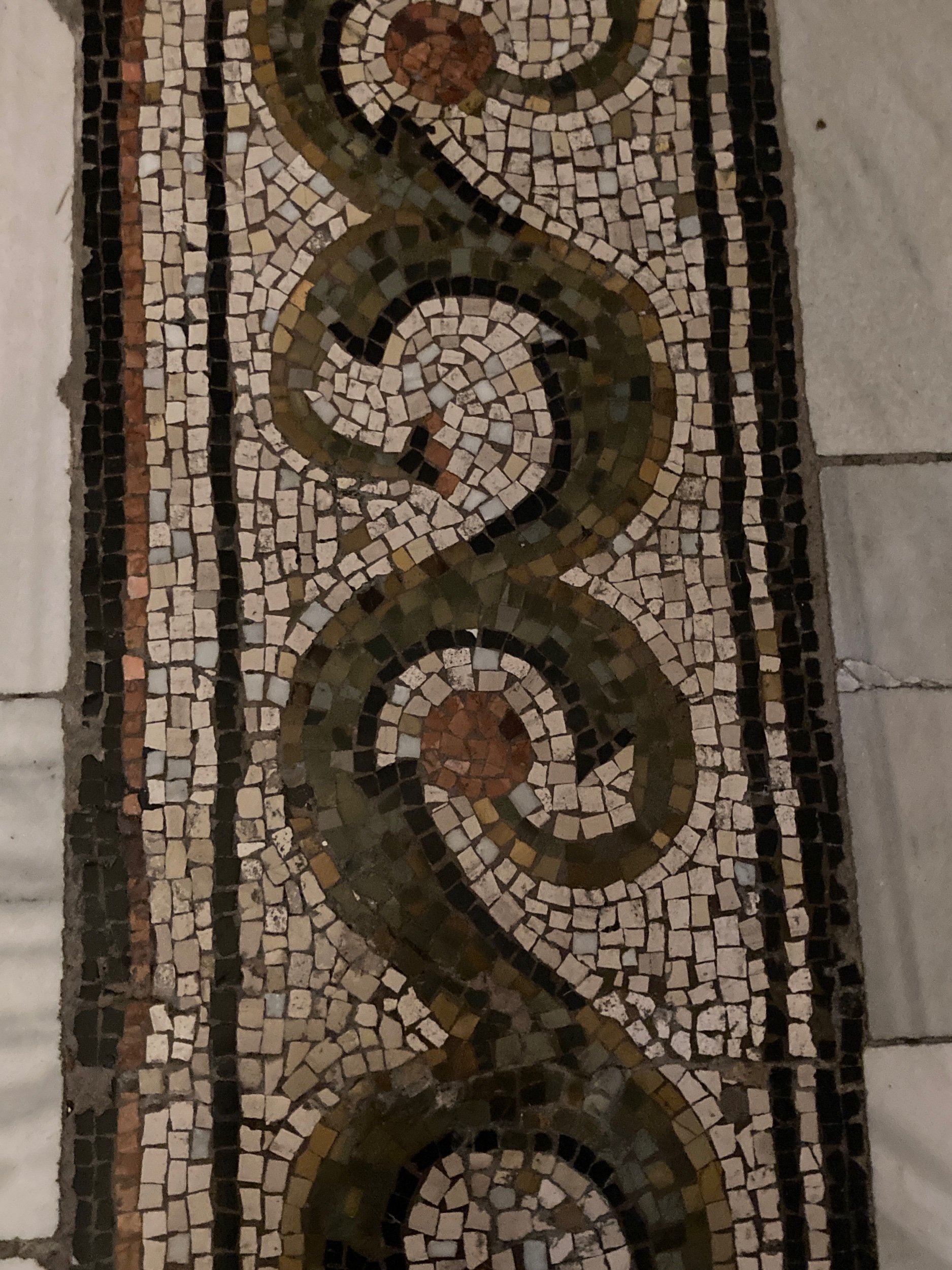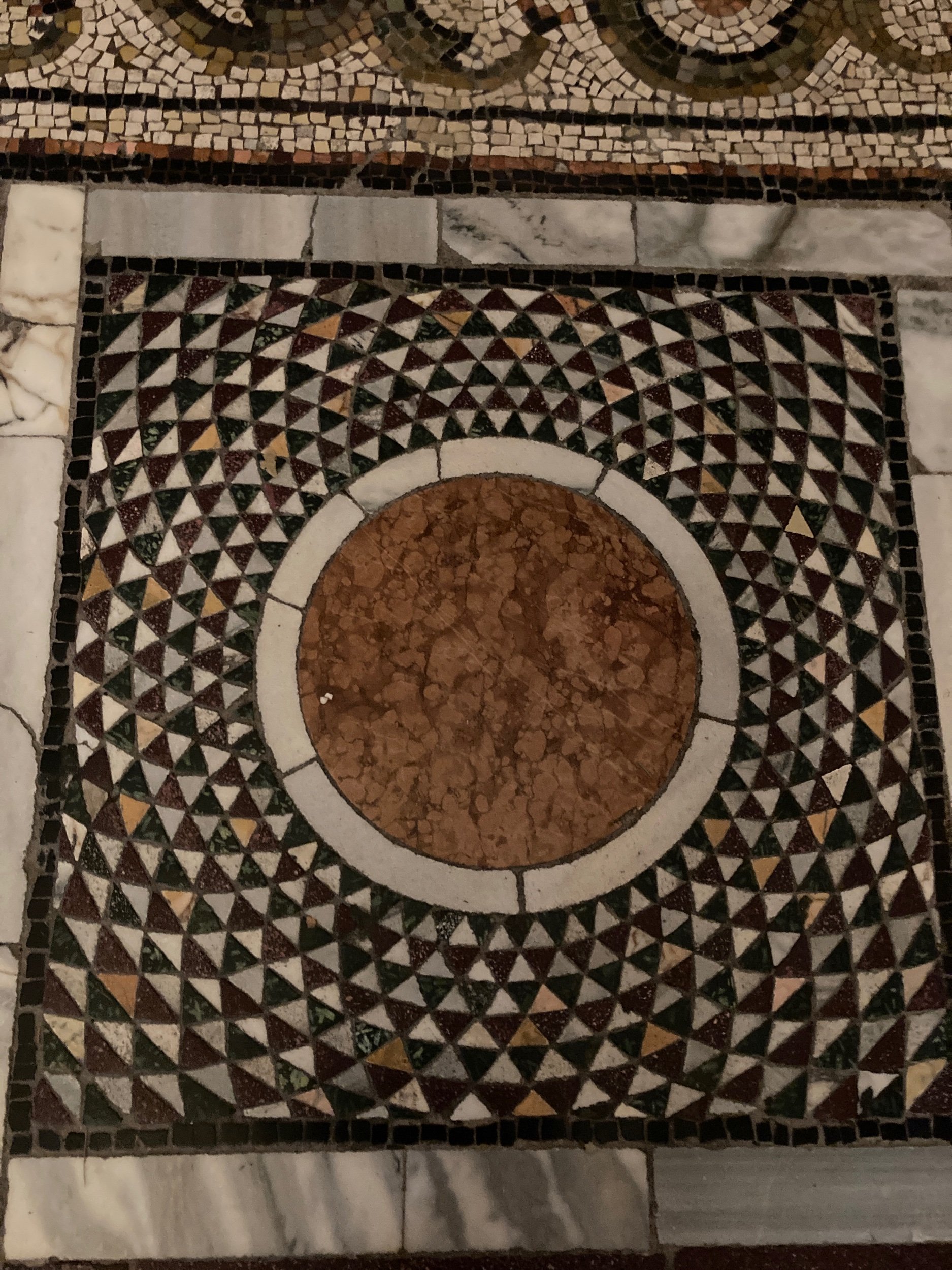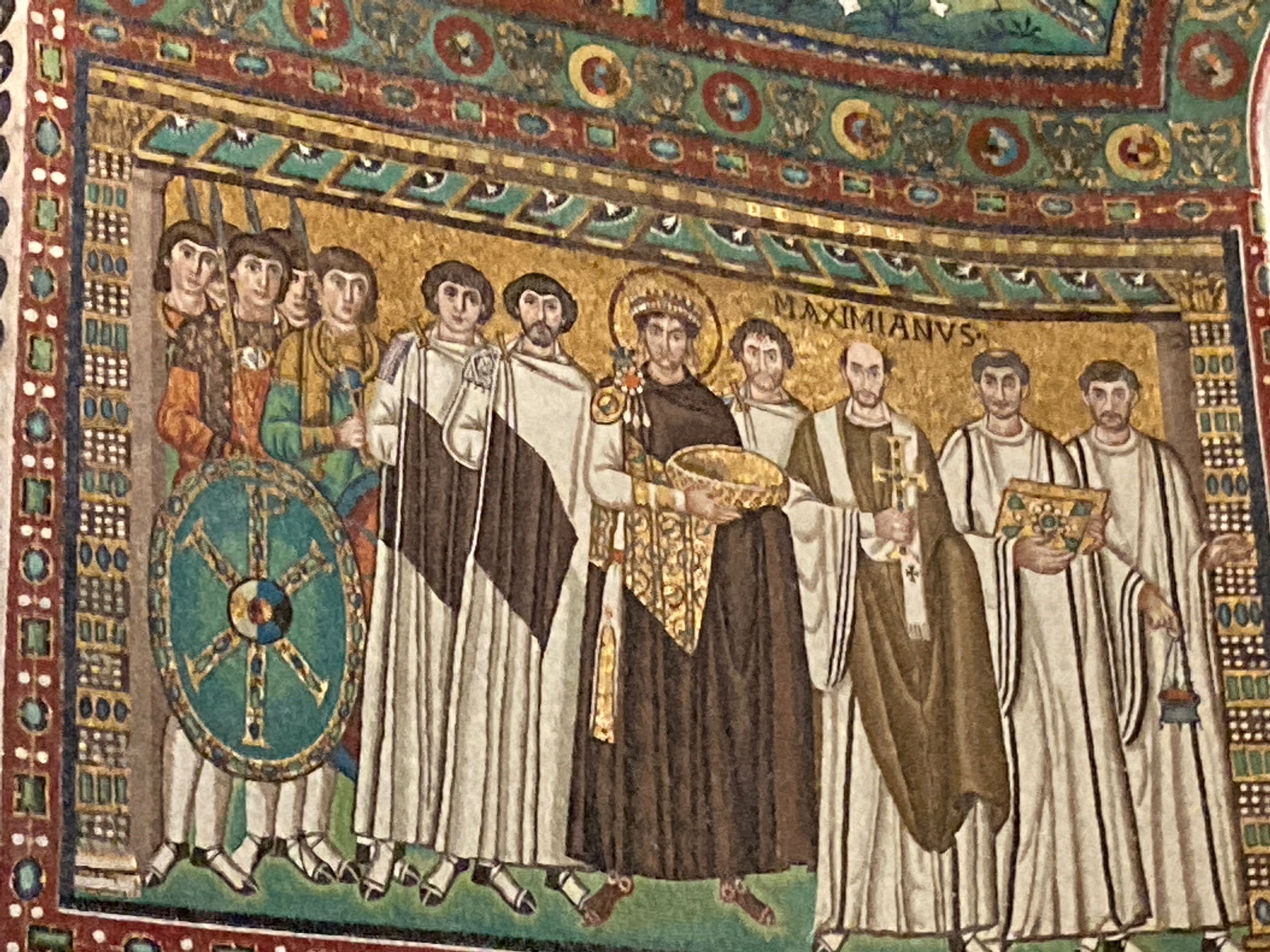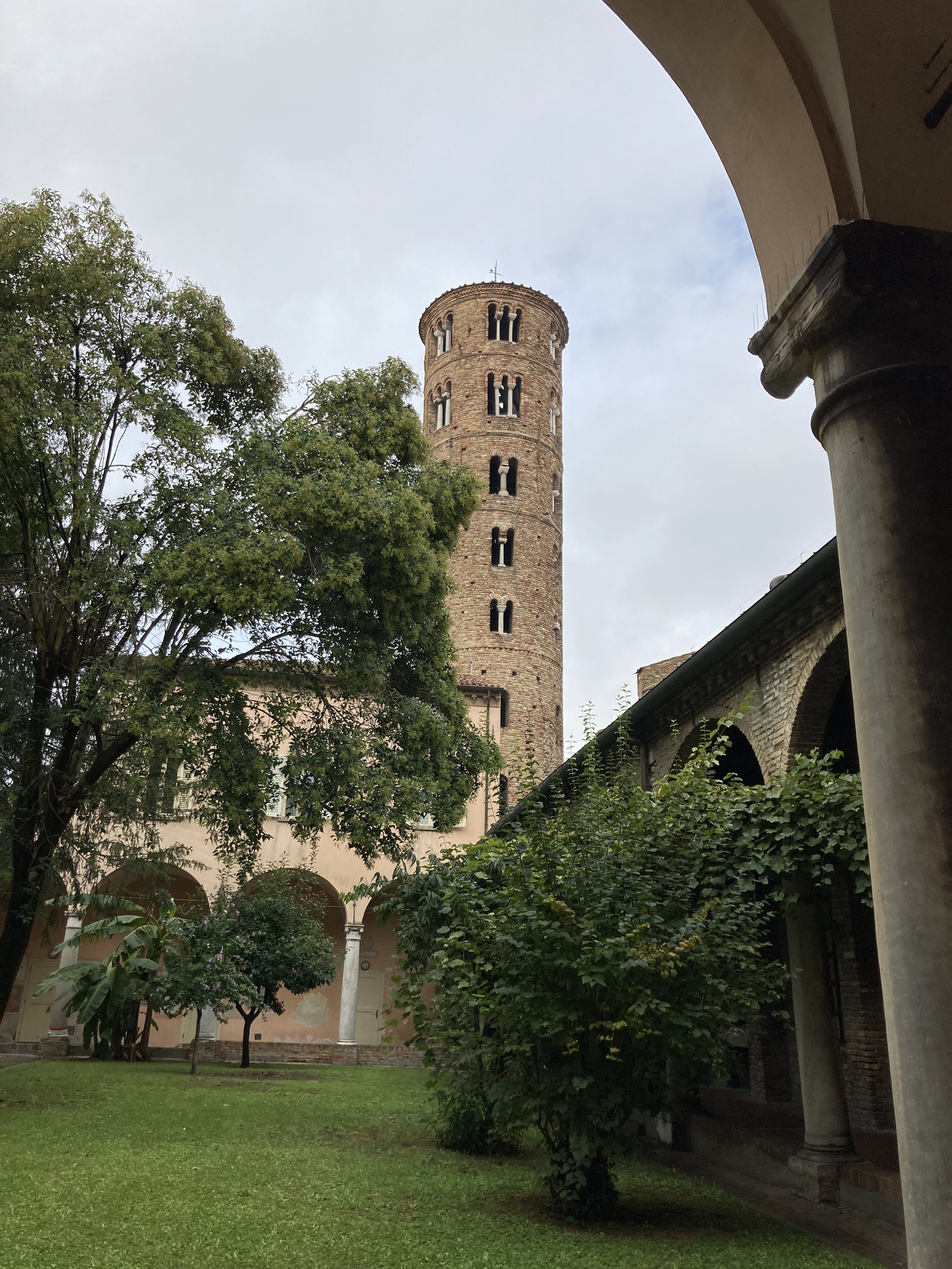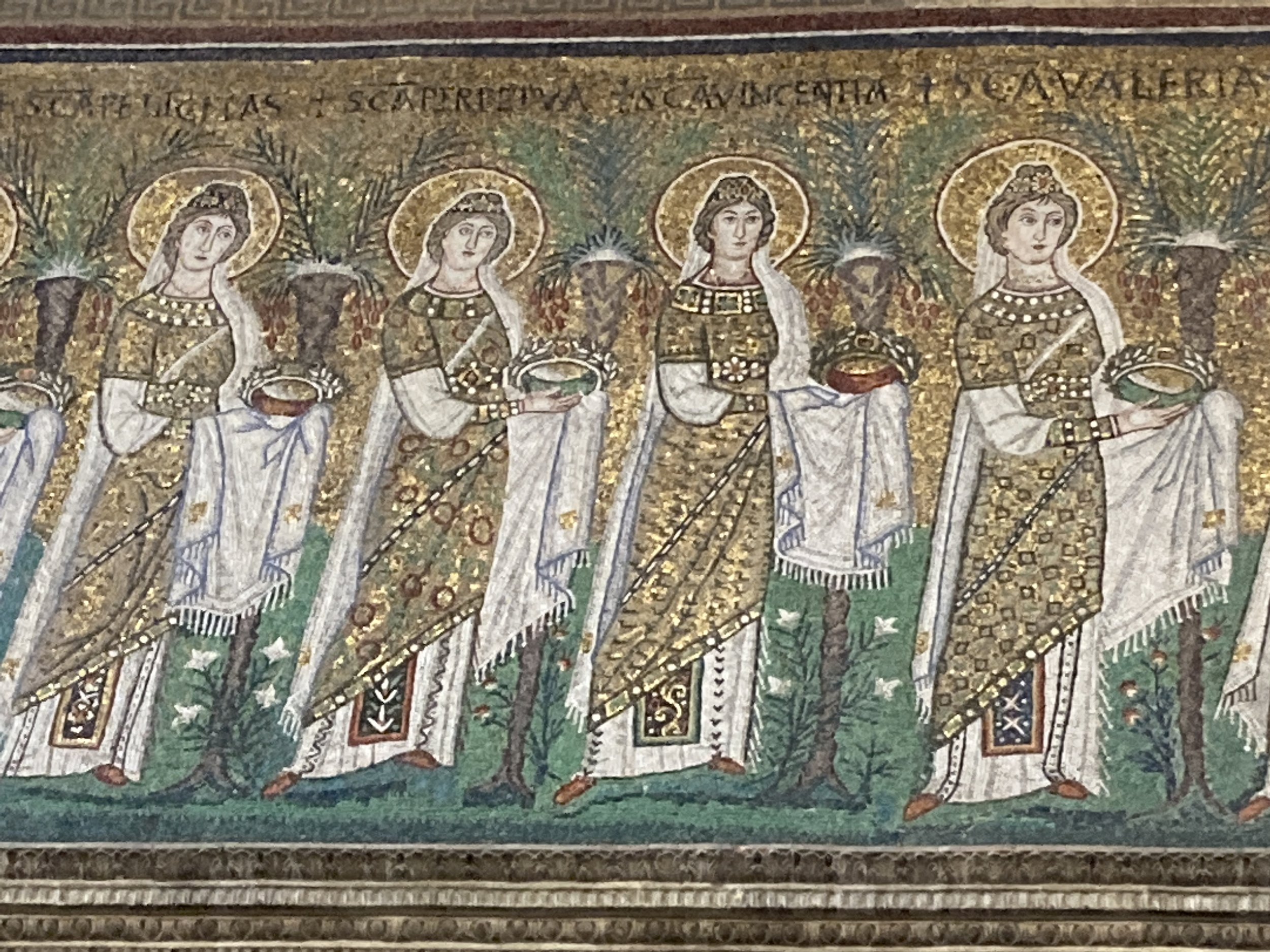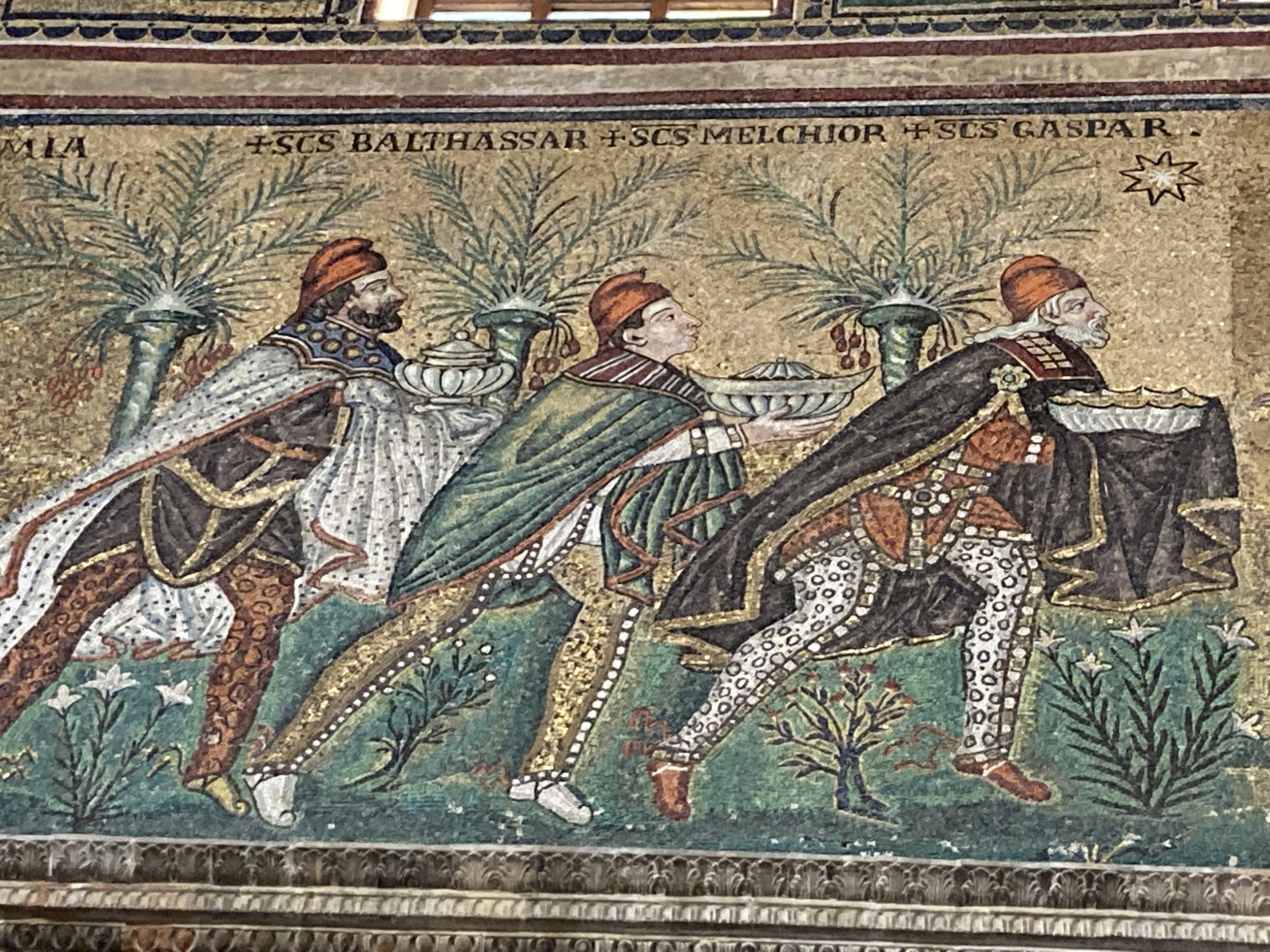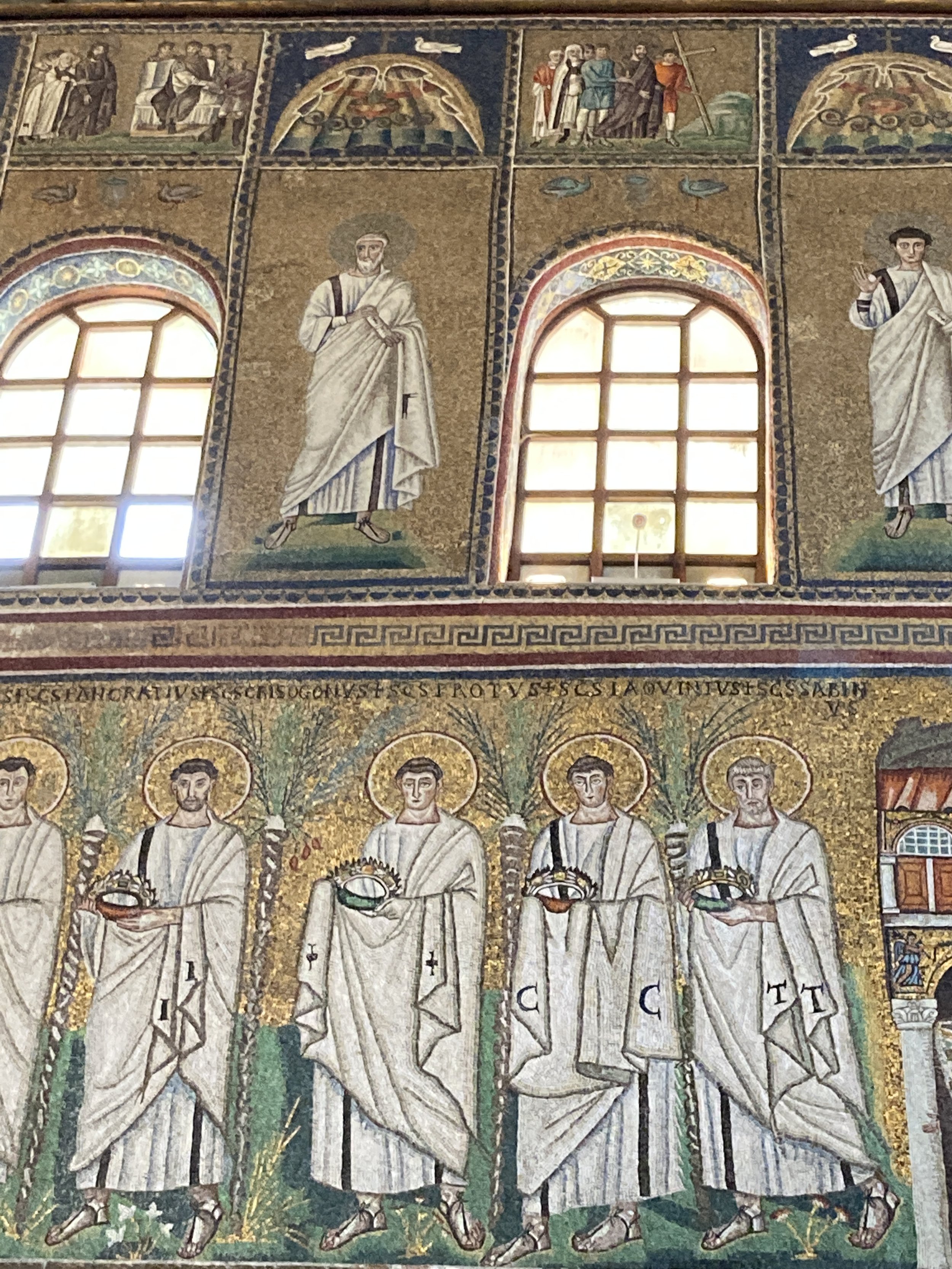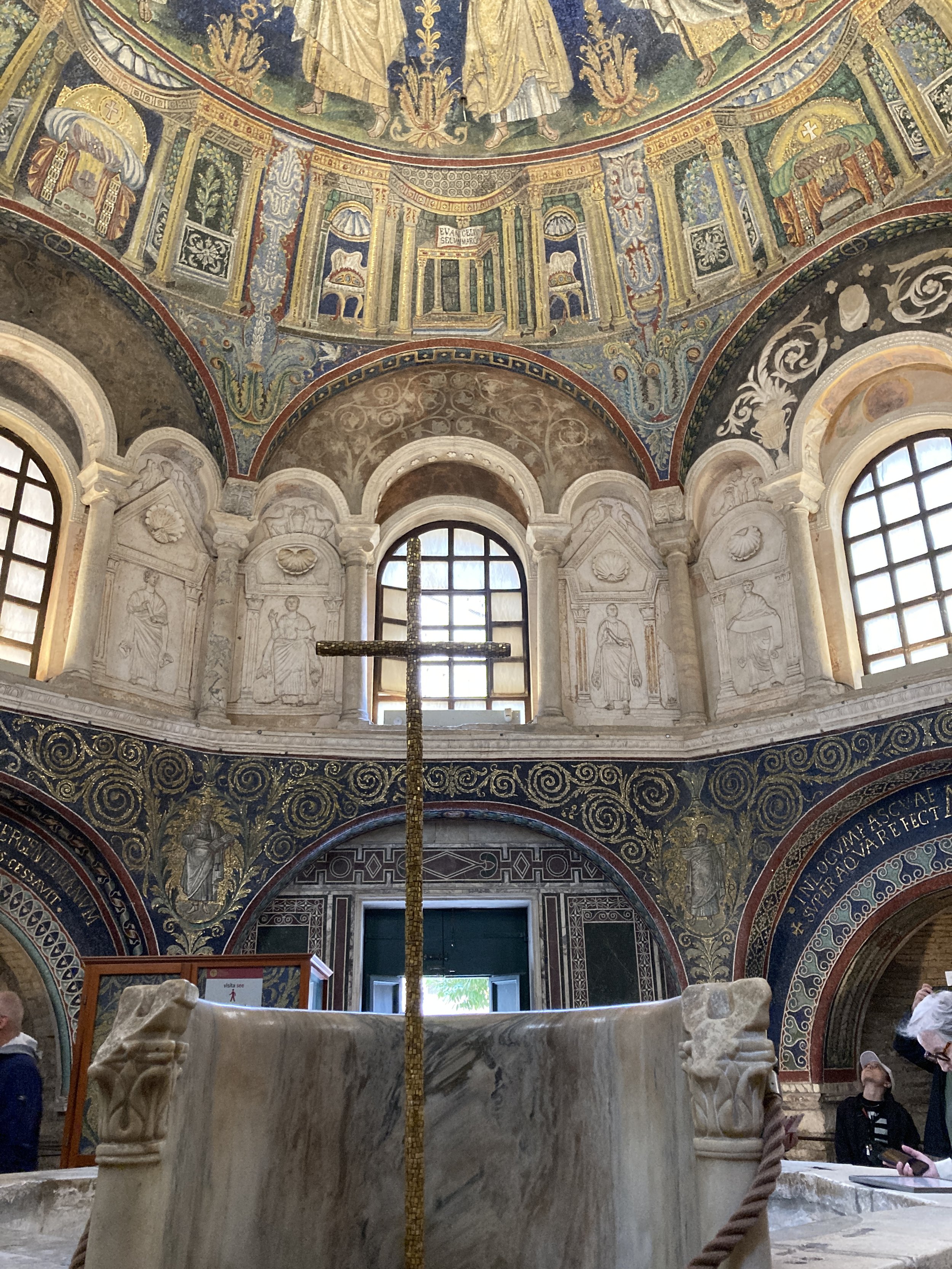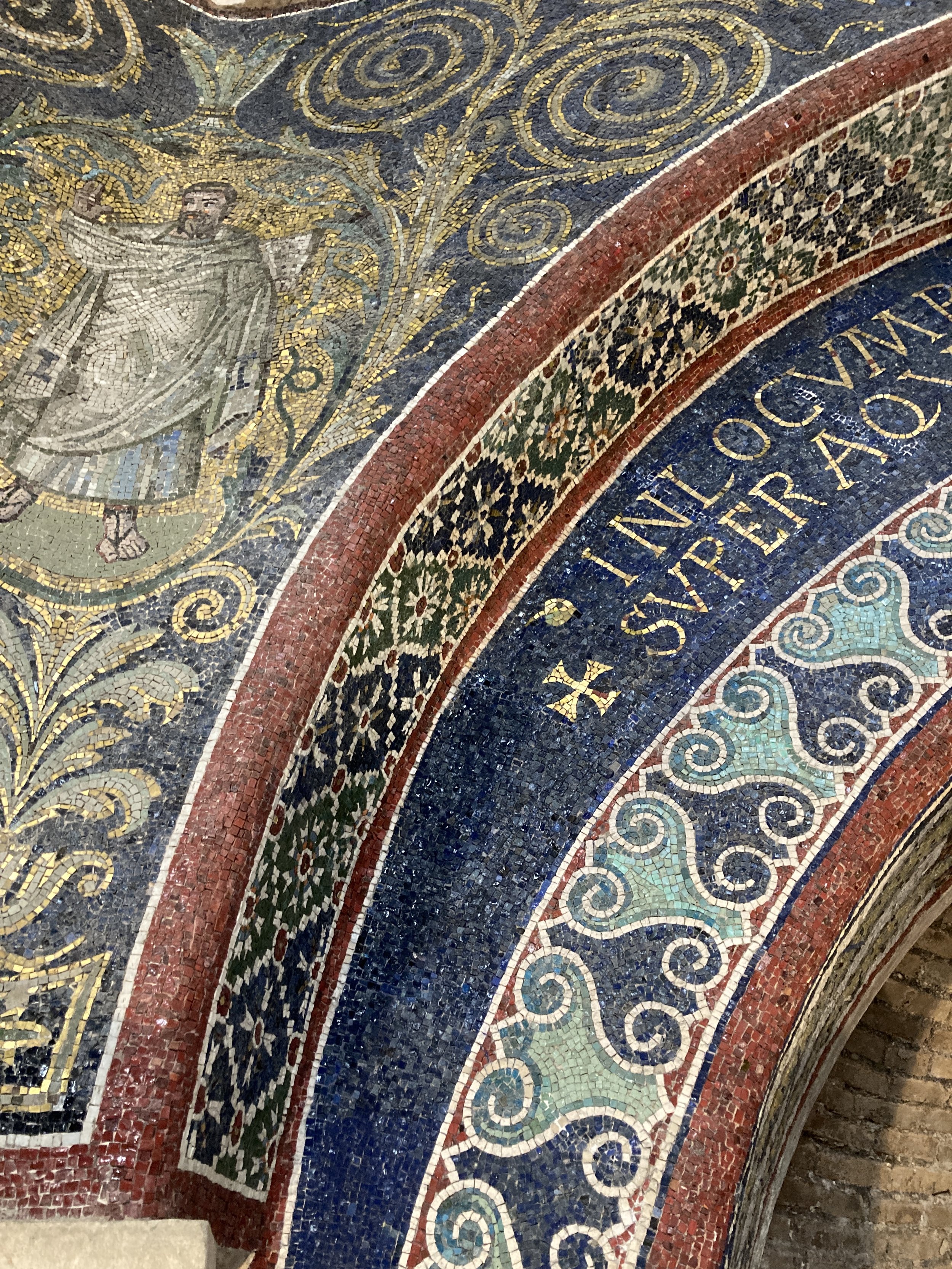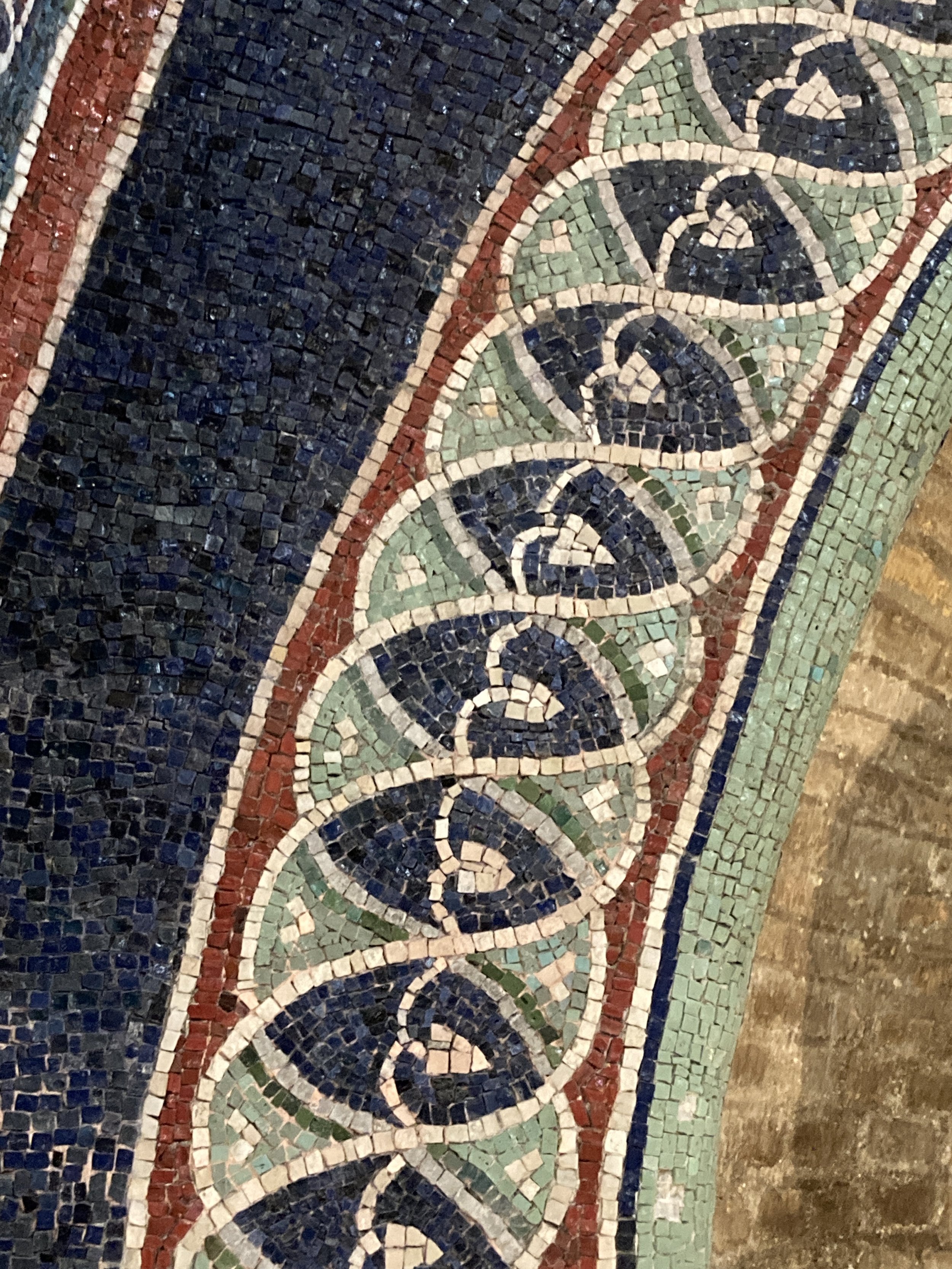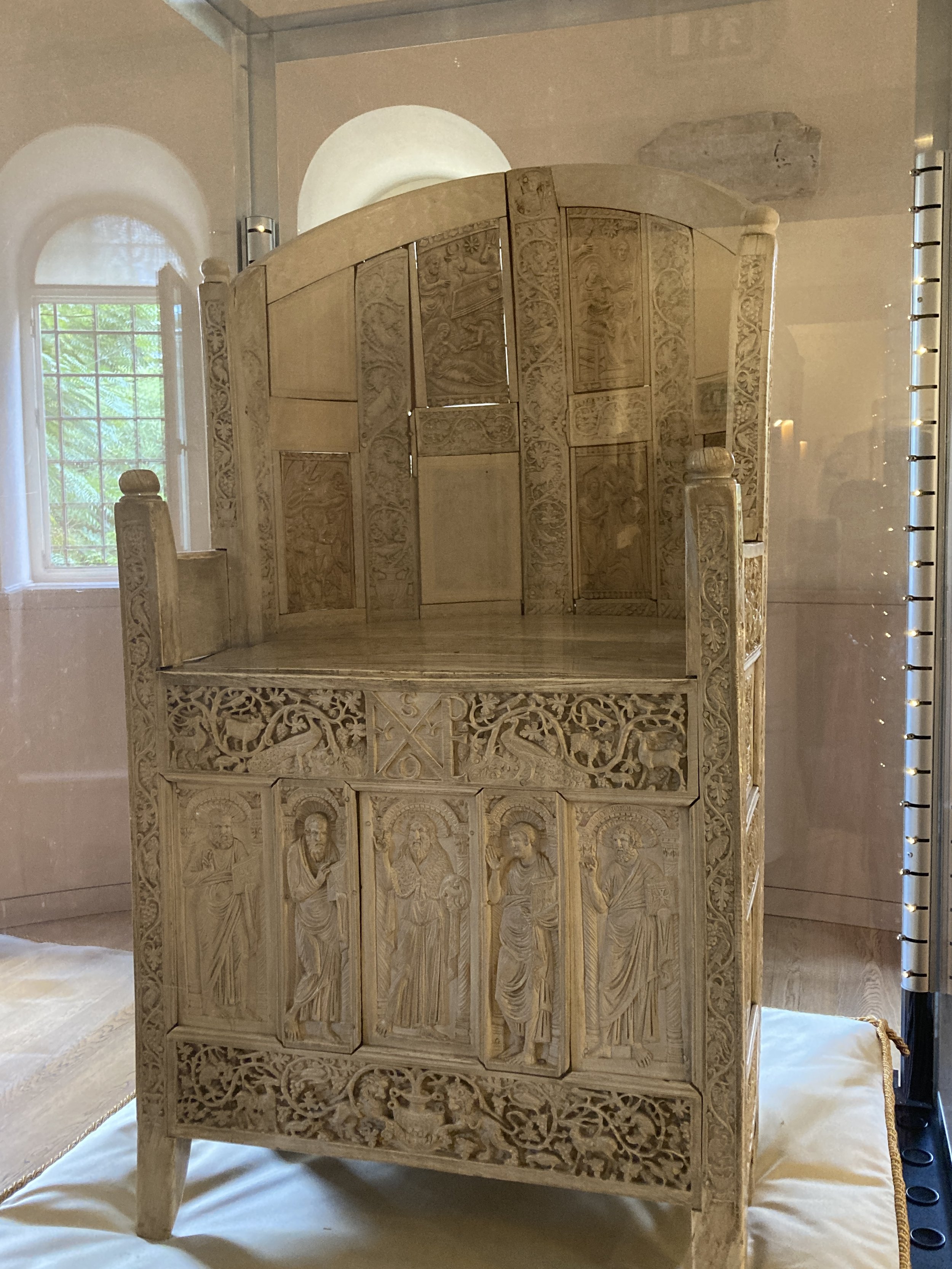Ravenna Part Two: Basilica di San Vitale and the Galla Placidia Mausoleum
This week, more about Ravenna and another two of the city’s important historical sites. One is quite small and the other much larger.
First, the smaller of the two, the Mausoleum of Galla Placidia. Galla Placidia, born around 390 AD, was the daughter of a Roman Emperor (Theodosius I) and wife to both Ataulf, king of the Visigoths, and the Roman Emperor Constantius III. She was also the mother of an emperor. She was powerful in her own right, playing a major role in Roman life and politics. Her contributions to society included construction and restoration of churches, including the mausoleum named for her in Ravenna. Although it is called a mausoleum, the building was used as a chapel and it is not Galla Placidia’s final resting place.
The mausoleum is small and intimate, constructed in the shape of a cross. Plain on the outside, it is stunningly beautiful inside - full of mosaics in dazzling blues and greens, touches of red, and white robed prophets. All of the upper portions of the interior, including the dome, the vaults, and the arches, are filled with brilliant detail and symbolism. There are starry skies, flowers and vines, animals, and a host of religious figures.
So much beauty in such a small space is breathtaking. The intimate size is welcoming and It feels a bit like a spiritual hug.
Detail of one of the lunettes, the Mausoleum of Galla Placidia
I didn’t imagine anything could compare, and yet, just across the grassy field, lies the Basilica of San Vitale…..
The Basilica of San Vitale, Ravenna
The much larger Basilica of San Vitale is different - less intimate, the building more angular outside with more distinct spaces inside. With decoration that goes from floor to ceiling it is hard to know where to look first.
Interior, Basilica of San Vitale, Ravenna
The mosaics are somehow less soft and more crisp, the imagery more clear. Where the Galla Placidia enchants you in to a mystic spirituality the San Vito demands you step up and take note.
Is one more beautiful than the other? Absolutely not, the Basilica is just as amazing but in a different way.
The Basilica’s website says that “getting out of San Vitale is not getting out of a church, is like being torn from a mother’s womb. You have to close your eyes because the light blinds (even if it’s not sunny), the voices deafen (even if people are not there), the world pushes and impacts”. I cannot argue. Stepping inside is to be transported to another world and on leaving it is quite a shock to discover the same old cacophonous world outside. It is that beautiful and enveloping.
The exterior of the Basilica is octagonal, unusual for a basilica, with buttresses. Inside there are huge columns, a central dome, two stories filled with arches and smaller columns (with some of the arches with painted ceilings rather than mosaics), and several alcoves. Pale translucent windows filter the light. Mosaic floors (detail below) are filled with pattern and muted color.
And the mosaics! The dominant color here is a soft green, with plenty of gold too. And almost every surface is decorated in mosaic scenes, even the arched entrances into each alcove. Bible scenes, saints, angels and apostles are everywhere.
With all of the mosaic filled churches in Ravenna, it is impressive that each has its own character and beauty. I couldn’t begin to choose a favorite among them. Put them all together and it is easy to see why Ravenna is filled with UNESCO World Heritage sites. What a treasure!


